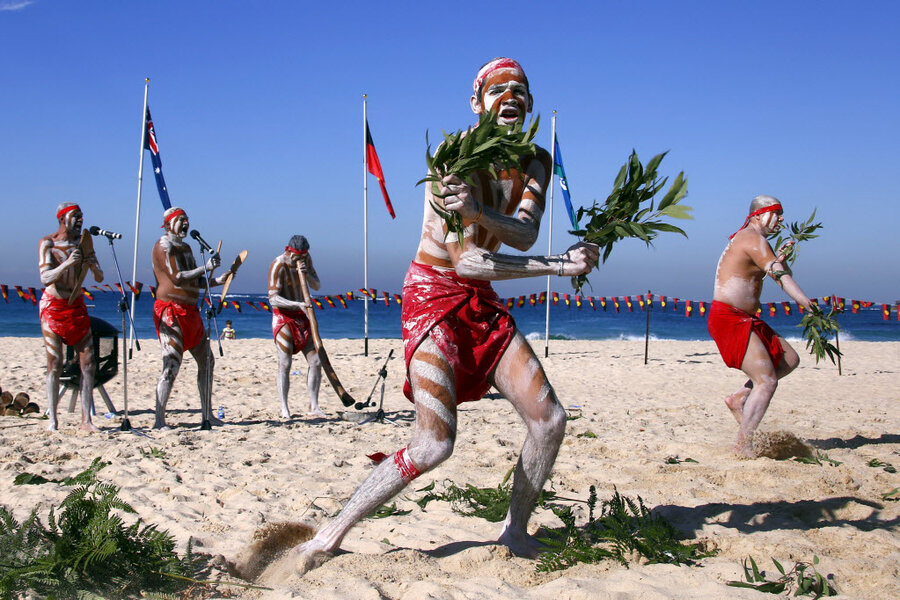How are Native Americans related to indigenous Australians?
Two separate studies published Tuesday found a genetic connection between Brazilian Amazonians and indigenous Australians, New Guineans, and other Australasians. But the two research teams offer contrasting explanations for the source of that connection.
Both studies – one published in the journal Nature on Tuesday, the other in the journal Science on the same day – agree that a large group of humans crossed the Bering land bridge from Siberia into the Americas between 20,000 and 40,000 years ago.
But one group of scientists, whose research is published in Nature, posits that two different populations migrated from Siberia to the Americas. The other group argues that all indigenous Americans (except for the Inuit) descended from one population that came over from Siberia in a single wave. They believe the Australasian DNA was added later, potentially through intermarriage and genetic mixing between groups living in the Aleutian Islands and down the Pacific Coast.
“I think almost no geneticists would have expected this,” said Pontus Skoglund, who co-authored the Nature study, in an interview with The Christian Science Monitor. “What it tells us in terms of history, which is more important, is that there was a greater diversity of Native American ancestral populations than people previously thought."
Both research teams used comparisons of patterns in the genomes of living people from different genetic groups and geographic regions, and of ancient skeletons. The two groups discovered the same genetic signal, but interpreted the source of that signal differently.
David Meltzer, an anthropologist and archaeologist at Southern Methodist University and another author of the Science paper, told The New York Times that the two studies’ differing theories are “not an irresolvable problem,” and a definitive answer could be found through more analysis of ancient DNA or the discovery of a new skeleton.






